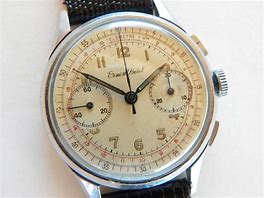Chronographs: Difference between revisions
| Line 7: | Line 7: | ||
Classic examples would include the [[Rolex Daytona]], [[Omega Speedmaster]], [[Heuer Monaco]] and [[Autavia]], and many many more. Lookfor them in the search box above. | Classic examples would include the [[Rolex Daytona]], [[Omega Speedmaster]], [[Heuer Monaco]] and [[Autavia]], and many many more. Lookfor them in the search box above. | ||
*[[The Pilots Chronograph]] | |||
Revision as of 01:40, 5 April 2020
Chronographs

A chronograph is a specific type of watch that is used as a stopwatch combined with a display watch. A basic chronograph has an independent sweep second hand; it can be started, stopped, and returned to zero by successive pressure on the stem. More complex chronographs use additional complications and can have multiple independent hands to measure seconds, minutes, hours and even tenths of a second. In addition, many modern chronographs use moveable bezels as tachymeters for rapid calculations of speed or distance.
Louis Moinet invented the chronograph in 1816 for use in tracking astronomical objects. Chronographs were also used heavily in artillery fire in the mid to late 1800s. More modern uses of chronographs involve piloting airplanes, car racing, diving and cooking!
Classic examples would include the Rolex Daytona, Omega Speedmaster, Heuer Monaco and Autavia, and many many more. Lookfor them in the search box above.
